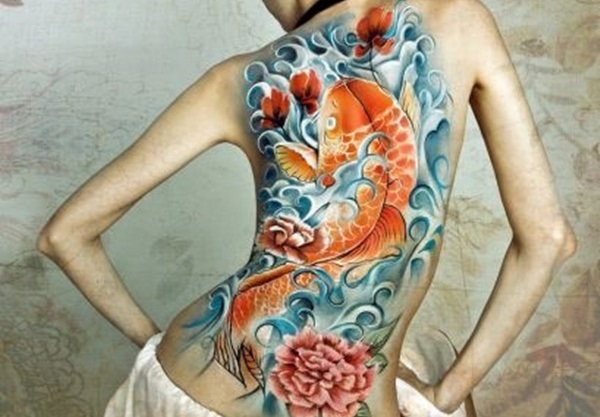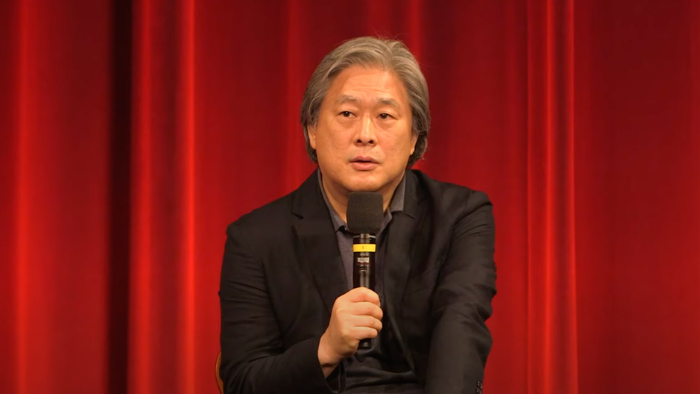Remember when rub-on tattoos were in? You could stop by any arcade quarter machine and come out with a colorful heart or butterfly on your arm. And if you were lucky, your temporary tattoo would even have glitter.
Childhood memories aside, it wasn’t until years later that I realized an odd trend among these sticker-sized tattoos. Aside from hearts and butterflies, there was never a shortage of Yin Yang symbols, Chinese scripts and Maori tribal bands. Even though these symbols did not speak to us culturally, from an early age we have been ingrained with and accustomed to these images.
And it’s not just temporary tattoos. Asian-influenced tattoos are very popular, but many people don’t even realize the significance behind the images they are permanently etching onto their skin. Having these choices in every tattoo parlor seems to have created a fetish for what some see as “exotic Asian symbols.” Problematic? Absolutely. Fixated solely on the tattoo image, some forget that there is a story and deeper meaning that comes along with the images.
Knowing the symbolism behind these popular tattoos can help give an identity to these images. With that being said, here are ten of the most common Asian-influenced tattoos that can be seen today, as well as the history behind how they came to be.
1. KOI FISH

The koi fish is a form of Japanese Carp that has a variety of symbolic meanings. Koi fish are known in Japanese culture because of their nature to swim upstream. Depending on their color, the koi fish can represent anything from power and perseverance, to bravery and independence.
2. CHINESE SCRIPT

Chinese characters have been a popular tattoo choice within the last decade. However, the ironic aspect to this tattoo choice is that it is only popular among Westerners. Chinese people rarely tattoo Chinese characters on their own skin, however Western culture enjoys it for its elegant appearance and mystery. The characters that are often used are Hanzi which is a form of traditional Chinese characters used in Taiwan, Macau, Hong Kong and other countries outside of China. There are also simplified Chinese characters that use less strokes. This form of written language is used in Mainland China, Malaysia and Singapore.
3. LOTUS FLOWER

The lotus flower is associated with various religious beliefs. In Hindu culture, the lotus is called padma and is used to represent divine beauty and purity. Its unfolding leaves expresses a spiritual awakening. In Buddhism, it also represents a purity of the mind, spirit and body. The widely accepted symbolism of this flower reflects the human cycle of life. As an analogy for the journey of life, the lotus flower begins at the bottom of a muddy pond and eventually blossoms to the surface as a beautiful lotus flower. Overcoming impure thoughts and actions, the lotus flower is there to remind oneself to be a better person.
4. YIN YANG

An extremely classic and common tattoo symbol, the Yin Yang is widely recognized. The Yin Yang is also known as Taijitu and is popular in Asian countries that follow Taoism. Being an important part of Chinese culture, this symbol ultimately represents the unity and balance between males and females. The white Yin represents females, while the black Yang represents males.
5. GEISHA

Geisha tattoos are often misunderstood. The common misconception with these images is that Geishas were prostitutes. In actuality, a Geisha represented womanhood and femininity. They represented the power of beauty, intelligence and grace. Being the desire of every man, Geishas embodied a subtle but dignified strength. This is why so many women choose to tattoo Geisha women as a symbol of womanhood and power. With their red robes meaning fertility and attraction, many women look to the Geisha symbol as a means of empowerment.
6. DRAGON

In many East Asian countries, the dragon has been a historic symbol of protection, power and wisdom. Although Western culture often portrays dragons negatively, in Eastern folklore, the dragon is seen as a noble creature that brings about good luck. In Chinese culture, like the Yin and Yang, the dragon is a representation of balance. Popular among both men and women, the dragon is often marked to symbolize order and balance in ones life.
7. MAORI

The ancient Maori have long used tattoos as a cultural symbol and means for important tribal rituals. Rather than being a tattoo of beautification, these tattoos held strong symbolic meanings and stories. Often worn by men, this tattoo was a painful test that showed strength and courage. Each image would illustrate one’s life, their rank, status, age and journey. Being the oldest form of tattooing style to date, the Maori tribal arm band is still very popular among people today.
8. CHERRY BLOSSOM

The cherry blossom is not only a beautiful tattoo choice, it is inspiring as well. Cherry blossom trees bloom in the spring, but they only have a short life span before they fall. In Japanese culture, these flowers represent the fragility of the cycle of life and remind you to appreciate the beauty around because life is short. In Chinese culture, these vibrant flowers symbolize love and energy.
9. TIGER

Like the dragon, the tiger is a very important emblem to both Chinese and Japanese culture. The Bengal tiger in particular is the most popular choice of animal for tattoo designs. Being one of the most majestic and revered species, people often get this tattoo because like a tiger, we want to embody a raw power and strength. In Chinese folklore, tigers are seen as protectors or guardians.
10. HAMSA HAND

A more recent trend in tattoo art, a hamsa hand tattoo is full of cultural and religious meaning. With roots from the religions of Islam, Christianity and Judaism, the hamsa hand is used to keep its wearer safe from the evil eye or those that try to show envy or harm. Ultimately, this symbol means safety and protection.
Featured Image Courtesy of art.ekstrax.com






